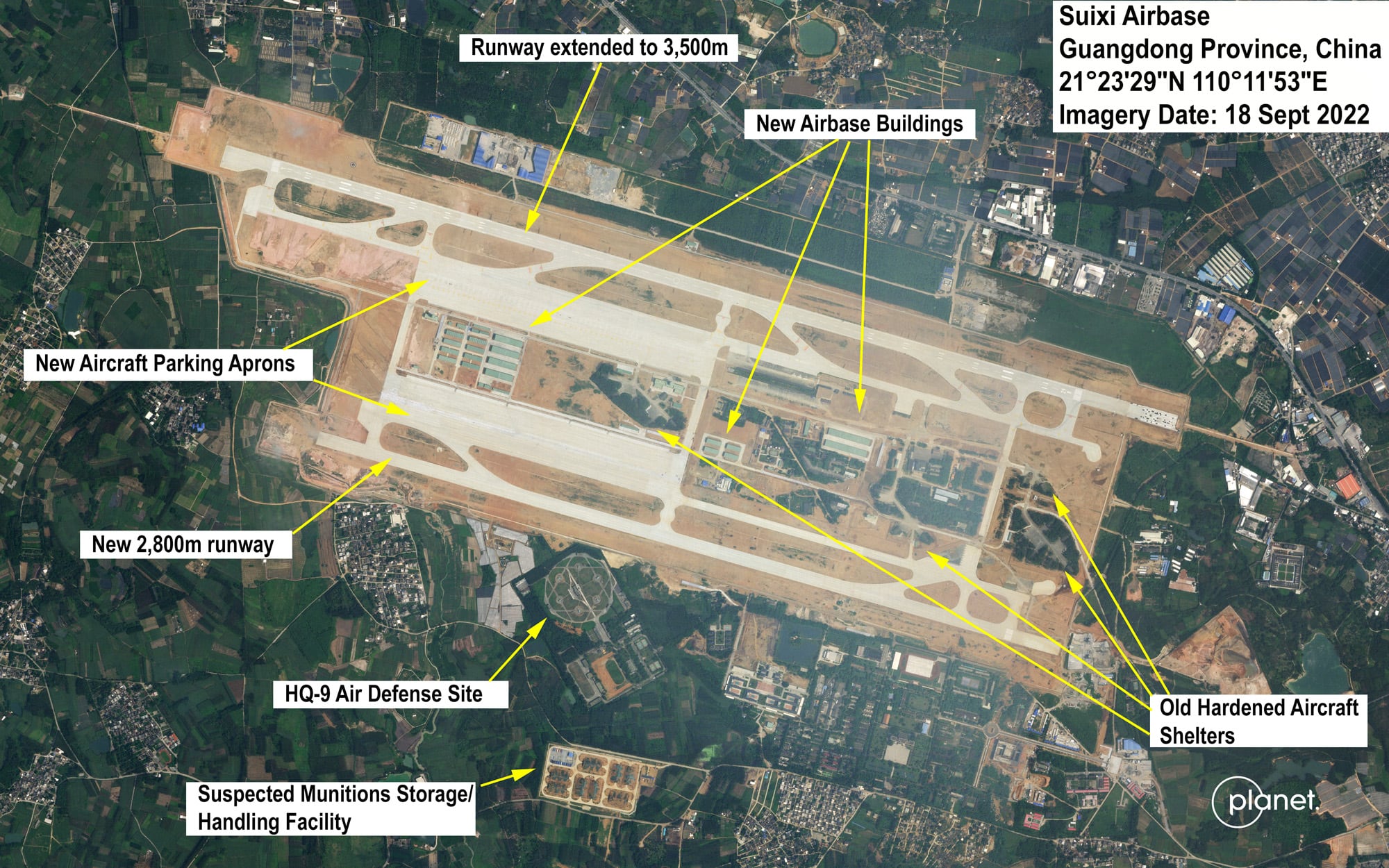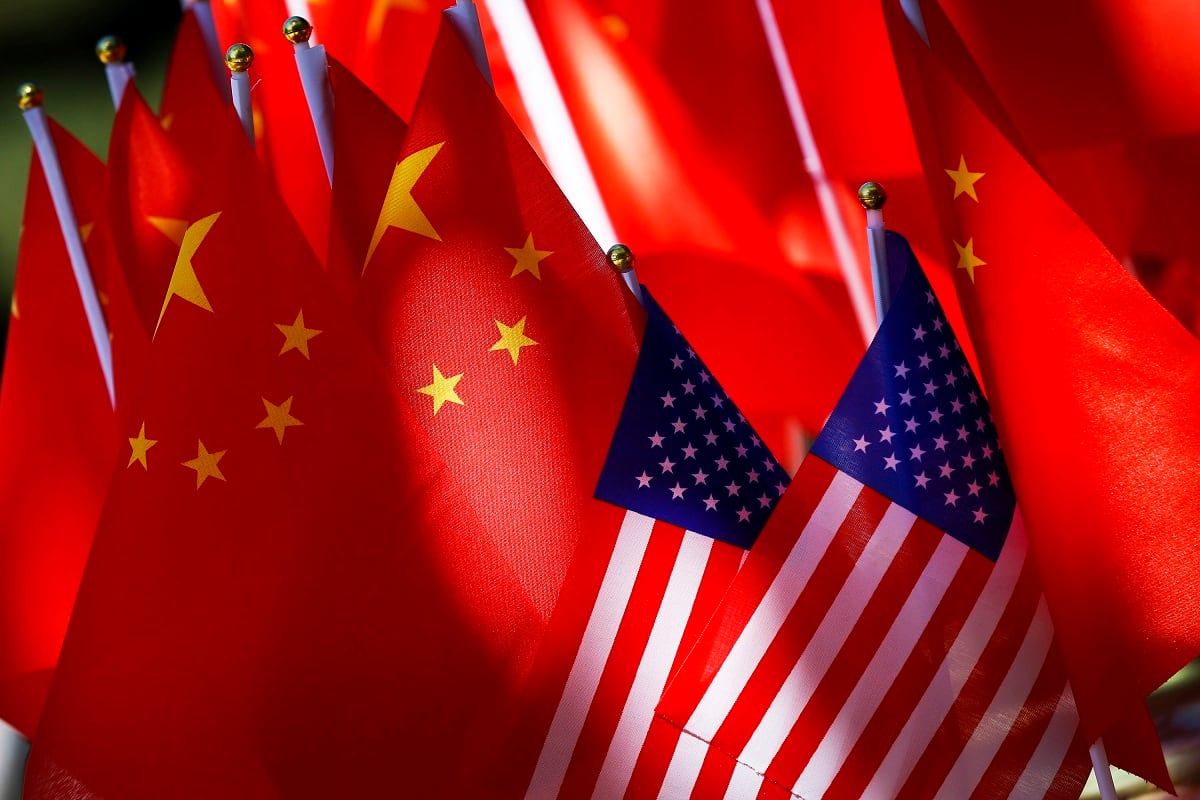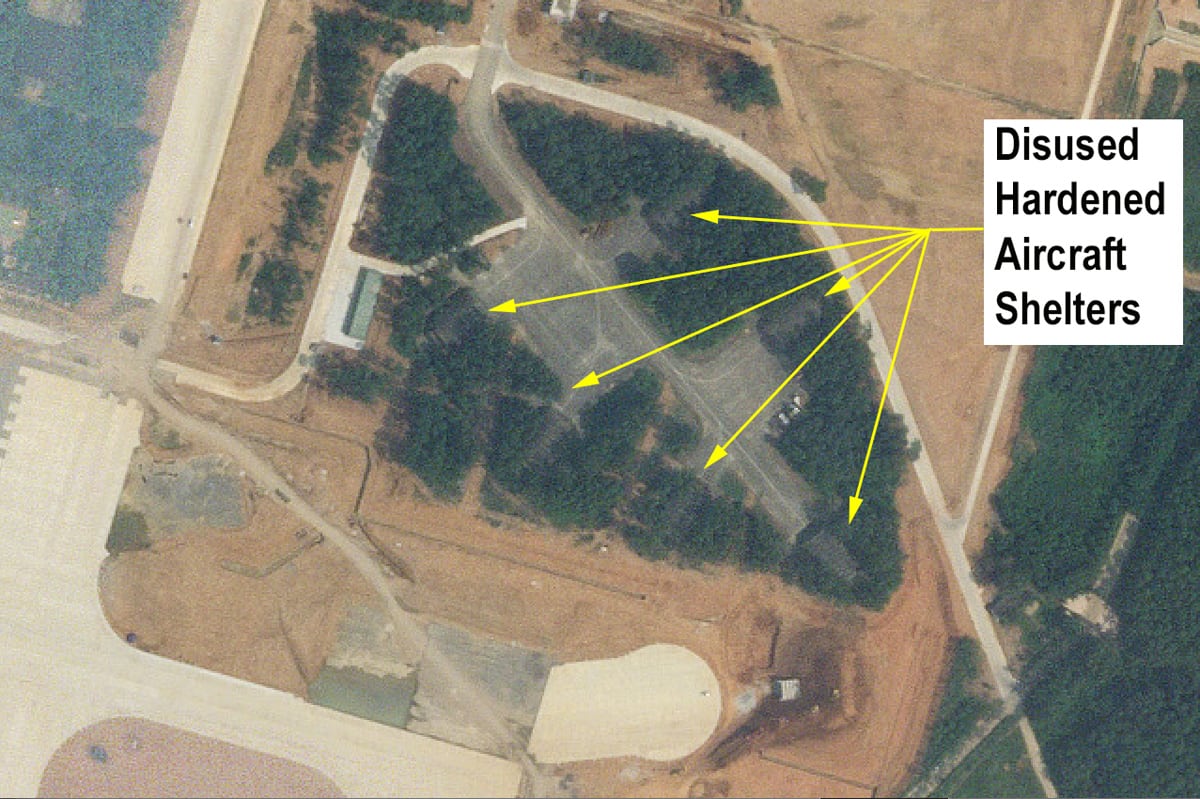MELBOURNE, Australia — China is expanding an air base close to a key southern naval installation with the addition of a second runway, widened taxiways and two vastly expanded aircraft parking areas, satellite photos show.

The imagery, taken Sept. 18 and provided to Defense News by Planet Labs, also show one of the new expanded parking aprons at the air base at Suixi in Guangdong province has had markings for more than 40 small and large aircraft painted on it.
The existing runway at the People’s Liberation Army Air Force base is located about 20 miles to the northwest of Zhanjiang city, which hosts a major naval base for ships of China’s South Sea Fleet. The runway was lengthened to 3,500 meters, or 11,483 feet.
This is in addition to a second runway south of the lengthened original, with this new runway measuring 2,800 meters. Both runways are parallel to one another and oriented in a roughly east-west direction.
RELATED

The taxiways at the base were also widened to 34 meters at a minimum, up from 18 meters. This will improve the ability of the base to operate large aircraft, as will two large aircraft parking aprons that were built as part of the expansion.
These two parking areas are similar in size, each measuring roughly 1,300 meters long. The satellite photos show the northern apron already has taxiway lines and aircraft parking markings painted on, with spaces marked for 41 fighter-sized aircraft and four larger aircraft.
Construction work on the base is ongoing, however, with a facility for producing concrete visible on the eastern end of the southern runway and another to the north of the northern runway.
Several of the air base’s old installations can be seen, including 19 hardened aircraft shelters and an air defense site. The latter was previously identified by the Jamestown Foundation as hosting an HQ-9 long-range surface-to-air missile battery that still appears active.
The imagery does not show any apparent new aircraft dispersal areas or hardened aircraft shelters undergoing construction, nor do there appear to be signs that weather shelters commonly seen at Chinese air bases are being built at the parking aprons.

Other suspected military-related construction is also visible near the base, with three clusters of what Decker Eveleth of the Middlebury Institute of International Studies at Monterey believes to be hardened munitions storage and handling facilities. Eveleth was the first to identify nuclear missile silos under construction in China.
The facilities are located to the south of the base, with one containing eight large structures and the other containing 12. The 20 large structures appear to be hardened bunkers, each measuring about 75 meters long.
The third facility, which appears to be in an early stage of construction, features four smaller structures, each 40 meters long.
Eveleth told Defense News that these structures will also serve as munitions checkout facilities for the inspection of various parts of munitions, like missiles, noting the length of the structures and what appear to be doors at both ends.
The air base in Suixi was previously home to the People’s Liberation Army Air Force’s 6th Air Brigade of the Southern Theater Command, which flew the Russian-built Su-30MKK multirole combat aircraft and was the sole operator of China’s Su-35 interceptor. The base also hosted the Guizhou WZ-7 Soaring Dragon, a high-altitude, long-endurance drone.
The expansion of the air base — particularly the expansion of the aircraft parking areas and widened taxiways — would enable operations by larger aircraft such as H-6 bombers or Y-20 tankers and transports. Its proximity to Zhanjiang is also ideal for providing air defense to the nearby naval base, which is one of two primary bases of the South Sea Fleet.
The fleet is where most of China’s amphibious forces are assigned to, and it has primary responsibility over Chinese naval operations in the South China Sea and the Bashi Channel, a strategic chokepoint between Taiwan and the Philippines.
Mike Yeo is the Asia correspondent for Defense News.







